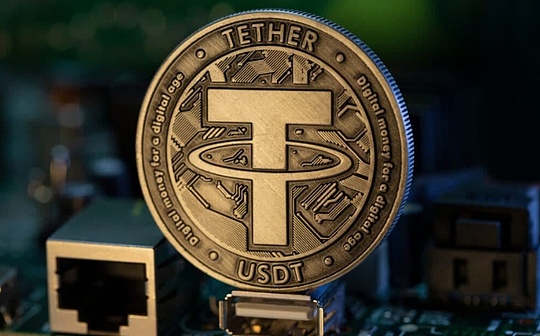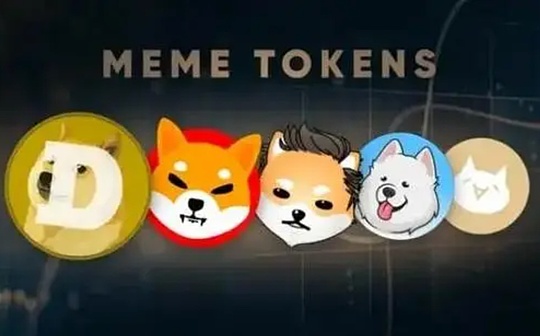InfoFi dilemma in the attention economy

Reprinted from chaincatcher
06/09/2025·8DOriginal author:Jay Jo , Tiger Research
Original translation: AididiaoJP, Foresight News
TL;DR
-
InfoFi is a structured attempt to quantify user attention and activities and connect them to rewards.
-
InfoFi currently has some structured problems, including degraded content quality and centralized rewards.
-
These are not limitations of the InfoFi model itself, but design issues of evaluation criteria and reward allocation methods, and urgently need to be improved.
The era of attention is tokens
Attention has become one of the scariest resources in modern industries. Information is rampant in the Internet era, but humans have extremely limited ability to process information. This scarcity has prompted many companies to compete fiercely, and the ability to compete for user attention has become the core competitive advantage of the companies.
The crypto industry demonstrates the level of attention competition in a more extreme form. Attention share plays an important role in token pricing and liquidity formation, which has also become a key factor in determining the success or failure of a project. Even technology-leading projects are often eliminated by the market if they fail to attract market attention.
This phenomenon stems from the structural characteristics of the crypto market. Users are not only participants, but also investors. Their attention directly brings the actual purchasing behavior of tokens, thus creating greater demand and network effects. Where attention is focused, liquidity is created, and narratives develop on the basis of liquidity. These established narratives then attract new attention and form a virtuous cycle that drives market development.
InfoFi: A systematic attempt to tokenize attention
The market operates based on attention. This structure begs a key question: Who can really benefit from these concerns? Users generate attention through community activities and content creation, but these behaviors are difficult to measure and there is no clear direct reward mechanism. So far, ordinary users can only obtain indirect benefits by buying and selling tokens. There is currently no reward mechanism for contributors who truly create attention.

Kaito 's InfoFi network, source: Kaito
InfoFi is an attempt to solve this problem. InfoFi combines information with finance to create a mechanism to evaluate user contributions based on the attention generated by user content (such as views, comments, and sharing) and peg them to token rewards. Kaito's success spreads this structure widely.
Kaito evaluates social media activities through AI algorithms, including posting and commenting. The platform provides token rewards based on scores. The more attention a user-generated content attracts, the greater exposure the project can gain. Capital regards this concern as a signal and uses it to make investment decisions. As attention grows, more capital flows into the project, and the rewards of participants increase. Participants, projects and capital work together through attention data as a medium, thus forming a virtuous cycle.
The InfoFi model has made outstanding contributions in three key areas.
First, it quantifies user contribution activities with unclear evaluation criteria. Points-based systems allow people to structure-defined contributions and help users predict what rewards they can receive through specific behaviors, thereby improving the sustainability and consistency of user engagement.
Second, InfoFi transforms attention from an abstract concept into quantifiable and tradable data, and user engagement transforms from simple consumption to productive activities. Most of the existing online engagement involves investment or content sharing, while the platform makes money through the attention generated by these activities. InfoFi quantifies the market responses users make to these contents and issues rewards based on these data, resulting in participants’ behavior being considered productive. This transformation gives users the role of network value creators, not just community members.
Third, InfoFi lowers the threshold for information production. In the past, Twitter big Vs and institutional accounts dominated information distribution and occupied most of the attention and rewards. Now, after receiving a certain degree of market attention, ordinary users can also receive tangible rewards, creating more opportunities for users of different backgrounds to participate.
The attention economic trap triggered by InfoFi
The InfoFi model is a new reward design experiment in the crypto industry that quantifies and ties users’ contributions to rewards. However, attention has become an over-centered value, and its side effects are gradually emerging.
The first problem is excessive attention competition and a decline in content quality. When attention becomes the standard of reward, the purpose of creating content now changes from providing information or encouraging meaningful participation to just for rewards. Generative AI makes content creation easier, and batch content that lacks real information or insights spreads quickly. These so-called "AI Slop" content are spreading throughout the ecosystem, causing concerns.

Loud Mechanism, Source: Loud
The Loud project clearly demonstrates this trend. Loud attempts to tokenize attention, and the platform chooses to assign rewards to top users who get the most attention in a specific time period. This structure is very interesting experimentally, but attention becomes the only criterion for rewards, which leads to overheating competition among users and triggers the generation of a large number of repeated low-quality content, which ultimately leads to the phenomenon of homogeneity of content throughout the community.

Source: Kaito Mindshare
The second problem is reward centralization. Attention-based rewards start focusing on a specific project or topic, and content from other projects actually passively disappears or decreases from the market, as Kaito’s shared data clearly shows. Loud once accounted for more than 70% of encrypted content on Twitter, dominating the flow of information within the ecosystem. When rewards focus on attention, content diversity will decrease and information will gradually revolve around projects that provide high token rewards. The size of the final marketing budget determines the impact within the ecosystem.
Structural limitations of InfoFi: Evaluation and distribution
4.1. Limitations of simple methods for content evaluation
Attention-centric reward structure raises a fundamental question: how should content be evaluated and how should rewards be distributed? Most InfoFi platforms currently judge content value based on simple metrics such as views, likes, and comments. This structure assumes that "high engagement equals good content".
Content with high engagement may indeed have better information quality or delivery effects, however this structure is mainly suitable for very high-quality content. For most mid-to-low content, the relationship between feedback quantity and quality is unclear, resulting in the phenomenon that duplicate formats and overly positive content will receive high ratings. At the same time, content that presents a diverse perspective or explores new topics is difficult to gain the recognition it deserves.
Solving these problems requires a more complete content quality evaluation system. Simple participation-based assessment criteria are fixed, and content value changes over time or environment. For example, AI can identify meaningful content, and in addition, community-based algorithmic adjustment methods can be introduced. The latter can use letting the algorithm adjust the evaluation criteria based on the regularly provided user feedback data, thereby helping the evaluation system to respond flexibly to changes.
4.2. Reward structure concentration and balance demand
The limitations of content evaluation coexist with the reward structure problem, and the reward structure also aggravates the information flow bias. The current InfoFi ecosystem usually runs a separate ranking list for each project, which is rewarded with its own tokens. Under this structure, projects with large marketing budgets can attract more content, and users' attention is often focused on specific projects.
To solve these problems, you need to adjust the reward allocation structure. Each project can retain its own rewards, and the platform can monitor content concentration in real time and adjust using platform tokens. For example, when the content may be too focused on a specific project, the platform token reward can be temporarily reduced, while topics with relatively low coverage can obtain additional platform tokens. Additional rewards can also be obtained for content covering multiple projects. This will create an environment with diverse themes and perspectives.
Evaluation and rewards form the core of the InfoFi structure. How content is evaluated determines the flow of information in the ecosystem, and it is also crucial who receives what kind of rewards. The current structure relies on a single-criteria evaluation system combined with a marketing-centric reward structure accelerates attention dominance and also weakens information diversity. The flexibility of assessment criteria is crucial to sustainable operations, and balanced adjustment of allocation structures is also a key challenge facing the InfoFi ecosystem.
Conclusion
InfoFi’s structured experiments aim to quantify attention and transform it into economic value, transforming the existing one-way content consumption structure into a producer-centered participatory economy, is of great significance. However, the current InfoFi ecosystem faces structural side effects in the process of attention tokenization, including degraded content quality and bias in information flow. These side effects are not so much a limitation of the model as a dilemma necessary for the initial design stage.
The evaluation model based on simple feedback exposed its limitations, and the reward structure affected by marketing resources also exposed problems. At present, it is urgent to improve systems that can correctly evaluate content quality, and also require community-based algorithm adjustment mechanisms and platform-level balance adjustment mechanisms. InfoFi aims to create an ecosystem that allows members to receive fair rewards through their participation in information production and dissemination. To achieve this, technological improvement is needed, and community participation in design is also needed.
In the crypto ecosystem, attention works like tokens. InfoFi is an important experiment in designing and operating the structure of a new economy. Its potential can be fully realized when it develops into a structure in which valuable information and insights are shared. The results of this experiment will accelerate the development of the information quantitative economy in the digital age.


 jinse
jinse

